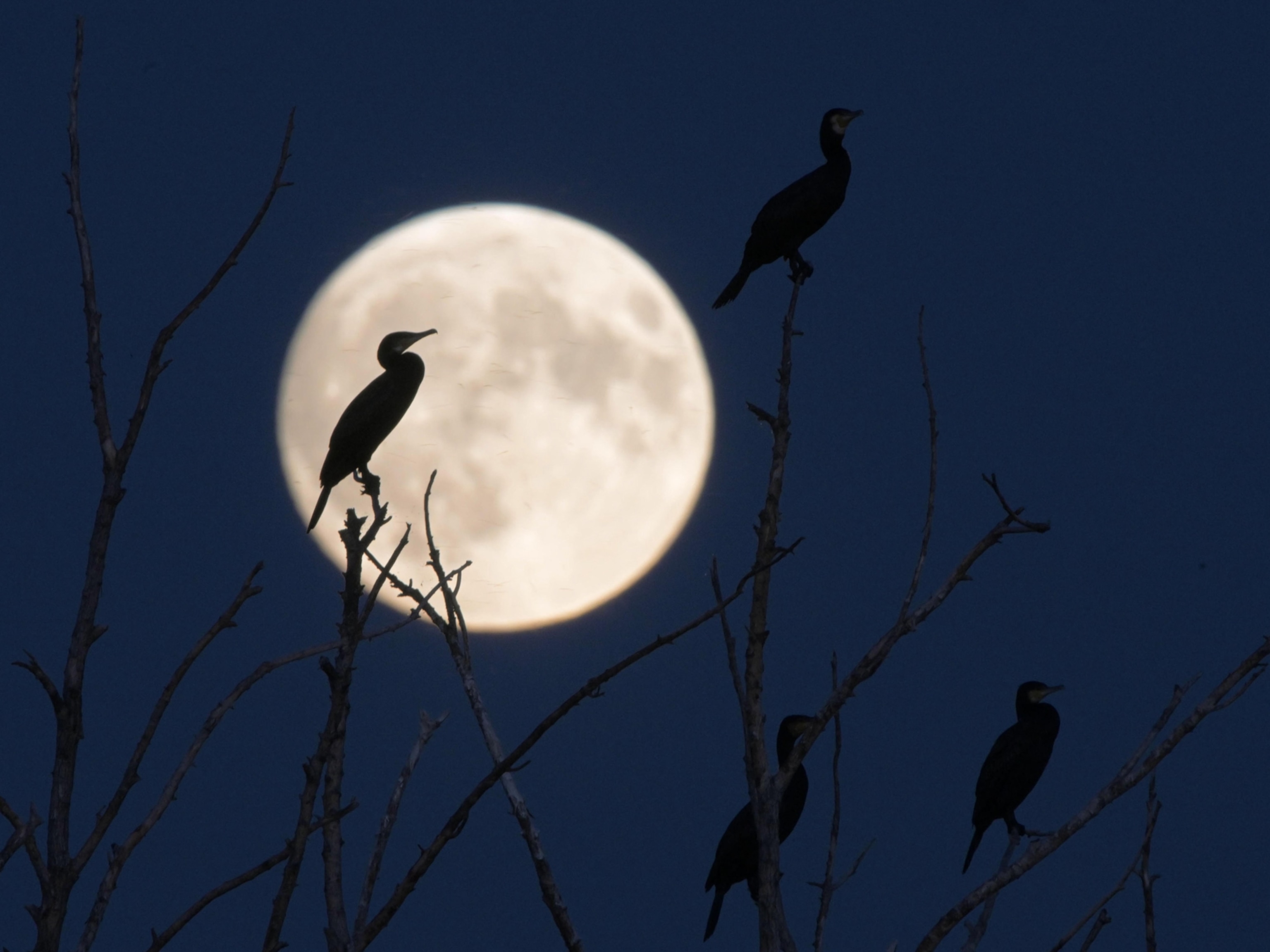
See the first supermoon on the spring equinox in 19 years
Look up while it lasts: This particular cosmic coincidence won't come again until 2030.
Assuming spring showers stay at bay, sky-watchers in the Northern Hemisphere will get to see a cosmic triple play on March 20, as a “super worm moon” lights up the vernal equinox. According to astronomy website EarthSky.org, a full moon has not landed this close to the first day of spring since the year 2000, and the two celestial events won’t happen less than a day apart again until 2030.
Because the moon’s orbit is egg-shaped, there are times when it is at what astronomers call perigee, or its shortest distance from Earth, and times when it is at apogee, or its farthest distance from Earth. And because the size of the moon's orbit varies slightly with each lunar cycle, perigee is not always the same distance from month to month.
At 3:45 p.m. ET (19:45 UT) on March 19, the moon will be a mere 223,309 miles away from our planet, making for an especially close perigee.
Then, at 9:43 p.m. ET on March 20 (1:43 UT on March 21), the moon will officially reach its full phase. As a result of these combined events, the full lunar disk will appear 14 percent larger and 12 percent brighter than usual—a spectacle widely known as a supermoon.
The equinox supermoon will be the final one for 2019, which already saw supermoons fall on January 21 and February 19. But the year may have saved the best for last, given the coincidental timing with the March equinox at 5:58 p.m. ET (21:58 UT) on March 20—less than four hours before the supermoon arrives.
Astronomically speaking, the March equinox marks one of the four major turning points in Earth’s cycle of seasons. We observe these annual changes because the planet is tilted on its axis, so that for most of the year, one hemisphere or the other is closer to the sun and is experiencing longer days.
But this tilt seems to vanish on the equinoxes in March and September, and both halves of the planet get equal amounts of day and night. For the Northern Hemisphere, the March equinox marks the start of spring, while in the Southern Hemisphere, it’s the official beginning of autumn.
In the north, the March full moon is also known as the worm moon, because it coincides with the time of year when earthworms begin to emerge from the thawing soils. That’s why this equinox supermoon is also being called a super worm moon.
The best time to catch all the lunacy is after local sunset on March 20 and 21, just as the moon rises. This is when the orb will appear at its biggest and brightest hovering above the horizon.
If you have cloudy skies for this supermoon, you can still take in the show via a live webcast: For instance, Astronomers Without Borders will be showcasing the super worm moon rising above Rome, Italy, starting at 12:45 p.m. ET (16:45 UT) on March 20 via the Virtual Telescope Project.
Clear skies!





